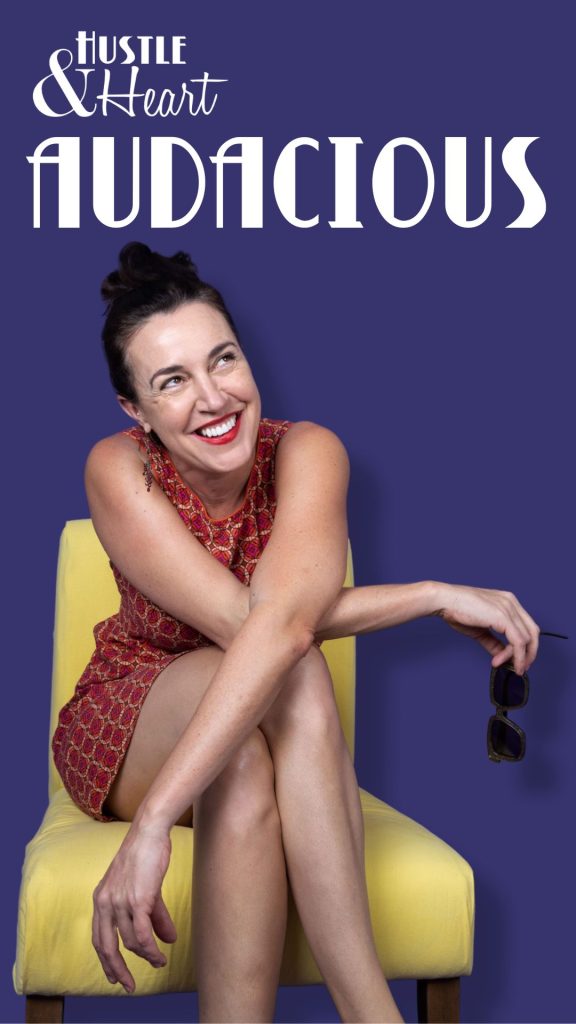
bit.fall by Julius Popp at MONA.
When I began my business in 2008, I came from PR agency land and custom publishing, so I structured my business the same way.
Most people do this when they start a business. Or, they have a quick glance around at what everyone else appears to be doing, and do something similar.
At some stage, we become more proactive about our business and develop a design that works best for our lives. For me, it was losing my business mojo after the birth of my second daughter.
This is when business really gets fun – because designing your business to fit you like a glove means:
- More money
- More clients who are a mutual admiration society with you
- More enjoyable, creatively satisfying work.
Before I launch in on how to do this, I have a caveat – designing your business is not likely to work from the get-go. For most, you’ll want to do this after having been in business for at least two years.
Why? Because when you start your own business or side gig, you want to get money in the door as quickly as possible – to prove your concept, boost your confidence, and fund your business growth.
Designing a perfect-fit business takes trial and error, reflection and learning through real experiences, and regular check-ins.
In the first months of starting your business, you need to make decisions like a ninja, work longer-than-you’d-like hours, and get as much feedback as possible (which means, working with as many clients as possible).
If you overthink things in the beginning, you’ll think yourself out of doing and may never leap. So leap first. Design later.
Why you may need to design your business
Typically, it’s time to redesign your business when:
- You’ve got plenty of clients and work, but don’t seem to be making much money
- Your days are full of mini-emergencies and putting out fires
- You know you need to delegate and plan, but you don’t have the time
- You’re attracting bad-fit clients who frequently quibble over your prices, are unsatisfied, and stress you out
- You tend to work days, evenings and weekends, and gleefully anticipate public holidays, so you can get work done, uninterrupted
- You can’t remember the last proper holiday you had.

Fat Car, by Erwin Wurm at MONA.
Choosing your business model
Your business model is how you make money: selling products face-to-face; selling products online; selling one-to-one services by either project/outcome or hourly (or per day); selling services online to many. Within these four basic building blocks are a myriad of brilliant business model possibilities, most of which you’ve likely not heard of.
Each has their pros and cons. There is no ‘magic bullet’ and no guarantees. Many small businesses are a hybrid, which somewhat lowers your risk, but also means that you’ll need more diverse skills.
Designing travel and holidays into my business
My partner and I are both self-employed and both work from home, with our two primary school-aged daughters. We travel overseas for a holiday once or twice a year, as well as traveling a lot within Australia.

The Naked Studio, by Brett Whiteley at MONA.
We’ve had several overseas working holidays as well as a few longer-stint working holidays of six weeks in France in 2013, with our families and friends, and Portugal in 2017 (with myself, my partner, two daughters, my sister, her husband and their two children, my other sister and her daughter, my parents, aunt, and two family friends).
I work best with sprints and rests. I’m not a marathon runner. I structure my year into quarters, with one or two busy periods per quarter, and one holiday.
I don’t like routine much and love surprises, spontaneity and (ideally) dancing on the bar while playing air guitar, in an exotic location, while my partner cheers me on (he’s not a dancer).
While it might seem strange to advocate routines and plans when you don’t like routines and you’re not a natural planner, it’s structure, planning and some semblance of routine that allows for greater freedom.
I run my online group program, Hustle & Heart, twice a year in Autumn and Spring. The lead up to opening Hustle & Heart for registration are the two most intense periods of the year, especially as I tend to schedule courses and events immediately beforehand to attract further interest, plus continue with one-to-one business coaching for business owners, public courses on digital marketing, and a small amount of speciality projects (such as writing sales pages or setting up marketing funnels).
Around these intense periods, I plan holidays and rest.
Planning in quarters

The Fairy Horde and the Hedgehog Host, by Tessa Farmer at MONA.
Business planning is far easier when done in quarters. Within a quarter, start by mapping your holidays (even if these are staycations, local excursions, or visiting family and friends). You need holidays more than ever when self-employed. Seriously, even a day trip to the beach or busy, if that’s all you can afford, will work wonders when you’re stressed, overworked and overwhelmed. Don’t neglect yourself!
Every year has natural ebbs and flows for every business – so study your monthly profit and loss for clues over the last few years. Naturally busy times means you are working longer hours, increasing your productivity, and (ideally) preparing in advance. When it’s quiet, and your clients are on holidays, you should be too!
Every January, my partner and I earn very little money. It’s not stressful because we expect too and typically have had a very busy November and (depending on the year), a reasonably busy December. We use this quiet time to go on a road trip, camp with family and friends (a necessary evil since kids enjoy it so much), or throw a lot of parties and barbecues at home.
Sydney is at its best every sunny January, with lots of Sydneysiders going away, making it a fantastic time to enjoy our city. (Come!)

Useen Seen, by James Turrell in the MONA restaurant, Faro.
Behind-the-scenes of my weeks, days and hours
Typically, each day of the week has a theme. On Mondays, I do my own business development. On Tuesdays and Thursdays, I do business coaching and training groups and running group coaching calls on Tuesdays, Wednesdays and Thursdays. Fridays are for fun, creative stuff, including meeting up with friends or old clients.
At the beginning of the week, when I’m more energised, I do more creative, strategic work. I always do some marketing or business development for my own business on a Monday because I’m demonstrating to myself that my business is a priority.
At the end of the week, when I’m less energised, I schedule more mundane work.
If I wake up naturally early and feel good, I’ll jump on the computer before breakfast for an hour or so. My partner tends to be better in the mornings so he oftentimes drops the kids to school while I’m better in the afternoons so I tend to pick them up. I clock off when the kids finish school and that’s the end of the workday. If it’s a busy period, I’ll continue working in the afternoon.

Flaschenzerschlagungsraum (Bottle Smashing Room), by Adolf Luther at MONA.
I never work late as it’s counterproductive – whatever I gain is lost by insomnia.
Once a month, I have a CEO day, taking the laptop on an excursion for planning, strategising, and creative marketing, and encourage clients to do the same.
One giant reason why I’m lucky enough to design my business and life this way is because I have a brilliant partner who is domestically inclined. He loves to cook (and does it regularly), does grocery shopping, enjoys hanging out with the kids, does all the laundry, plus a lot of other life organisation and admin.
For a lot of men, this is a given – this person is their partner. For many more women, this is unusual, which means that they have far less time to dedicate to their business. I would sincerely love to not mention this, but it would be dishonest of me to neglect it.
Of course, my partner is lucky enough to have me too, especially as he travels interstate every other week. We’re both very lucky as well to have lots of family around to help out with babysitting.
Every quarter, I meet with a small group of business owners to help them design a business that works for their life.
Designing your business is about backing yourself to quit what isn’t working and go after what you want and coaching other people on how to treat you and what to expect of you. It’s about regularly checking-in to reassess, edit and refocus. It’s about changing your attitude to reactive and subservient to proactive and powerful.
Ultimately, designing your business so that it makes sense for you enables you to do your best work. It encourages you to count your blessings in life by committing to living it joyfully.





